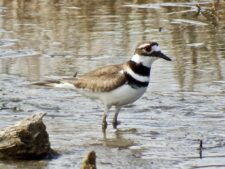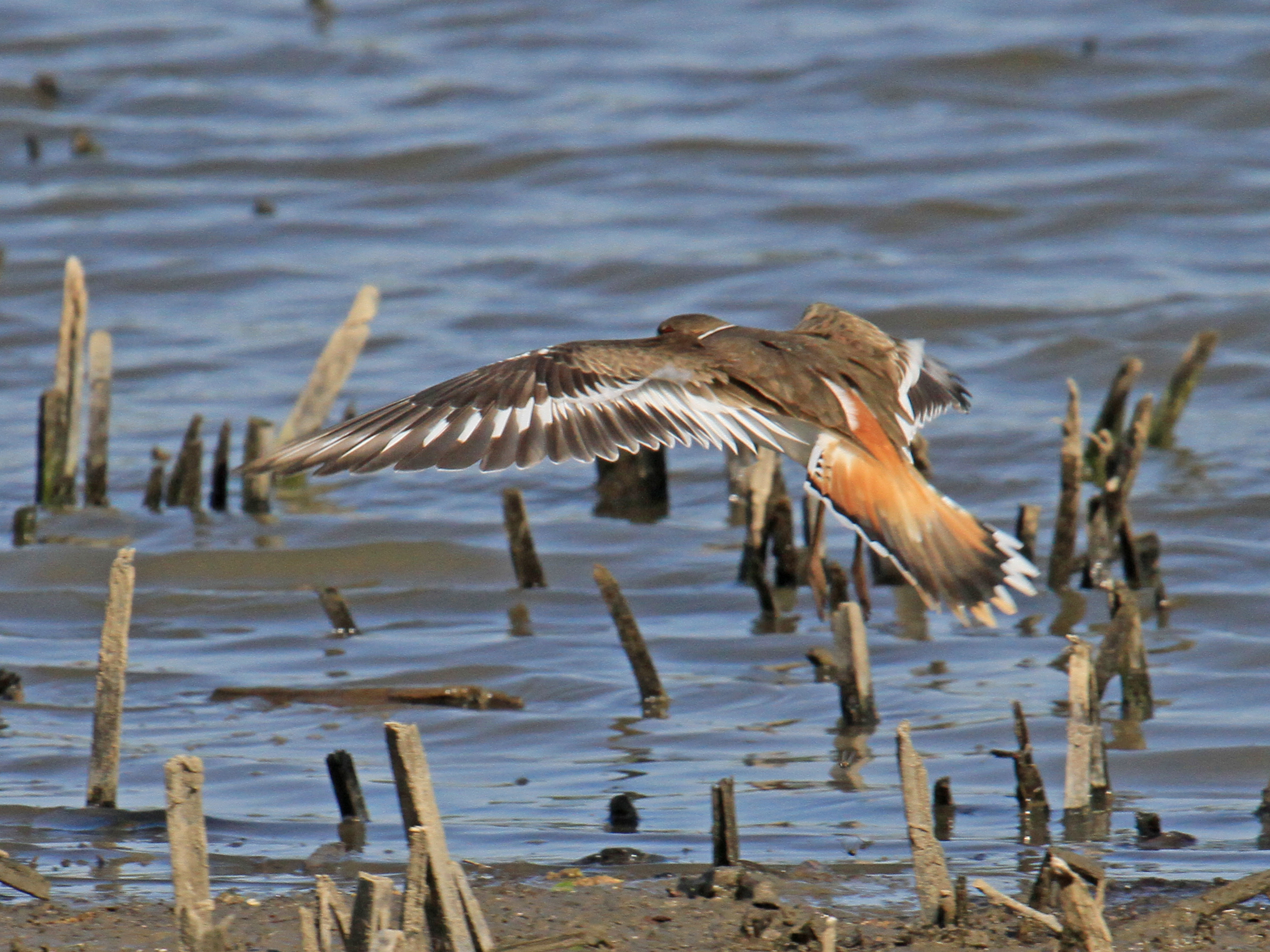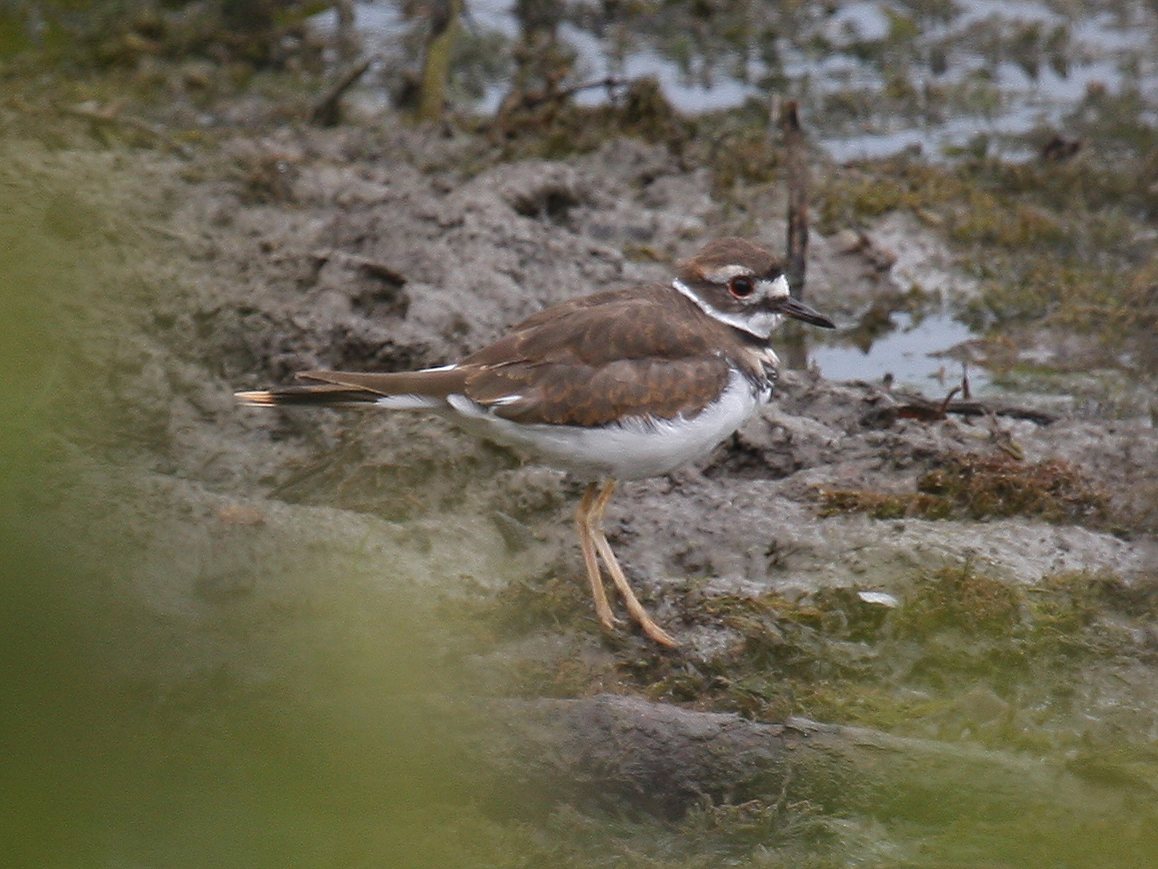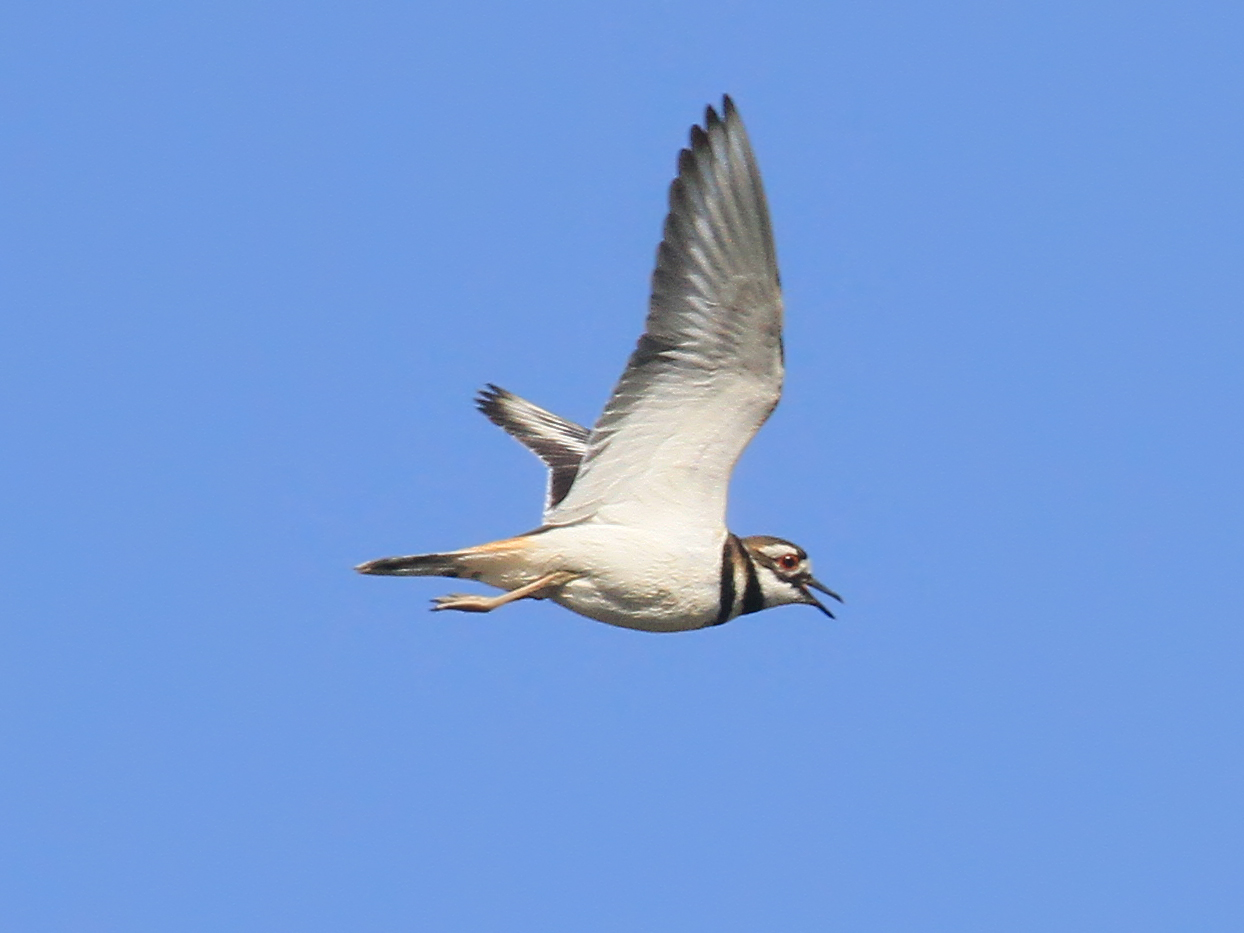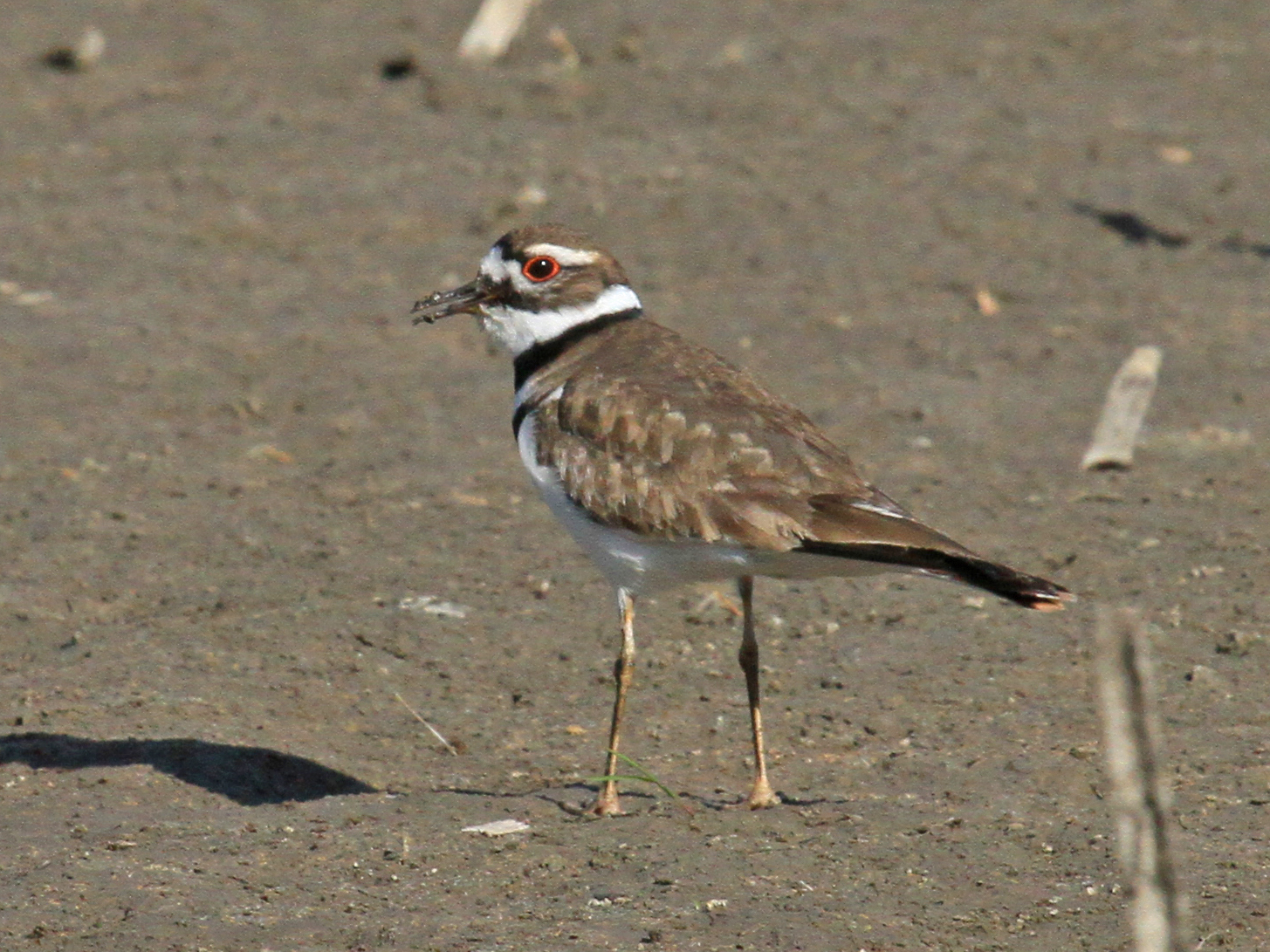
10.5 inches long. The Killdeer is a medium-sized, long-winged shorebird. It has a brown cap, back and wings. The breast and belly are white with two black breast bands. The rump is rust red. The brown tail has a black band and then a white band at the end. The outer tail feathers are white. The forehead is white and there is a white stripe behind the eye. The face is brown with black lores and black on the upper borders of the white on the white forehead and collar. There is a red eye ring.. The dark bill is short and fairly thick. The legs are flesh colored. A white wing stripe is visible in flight.
The Killdeer is a very common summer breeding bird in the area. It can be from mid March through early March to as late as early December. It can best be seen along Stream Trail and the Great Marsh.
The Killdeer is by far the most wide-spread plover. It is tolerant of humans and is conspicuous in fields, shorelines, and a many other open habitats. They use their long legs in a conspicuous running then stopping then bobbing gait. When they have young around they will use a broken-wing act while calling mournful cries as they try to draw potential predators away from nests and chicks. At one time the Killdeer was hunted and declined precipitously, Now it is probably more common than at any time in its history. Even when it is not breeding its “Killdeer, Killdeer” call is heard. This has given it some common names such as “Chattering Plover” or Noisy Plover”.
Disclaimer: The content of NatureSearch is provided by dedicated volunteer Naturalists of Fontenelle Forest who strive to provide the most accurate information available. Contributors of the images retain their copyrights. The point of contact for this page is: Phil Swanson

